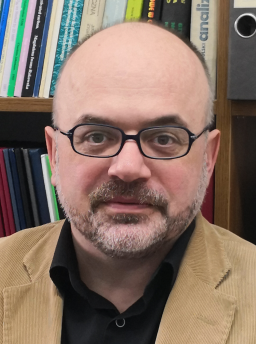Этот сайт использует куки.
Соответственно настройкам вашего браузера и для улучшения функционирования сайта umcs.pl были установлены куки. Используя этот сайт Вы соглашаетесь с их использованием. Вы можетеизменить это в настройках вашего браузера.
THE MOST IMPORTANT DATES:
October 1984 - March 1989 – master degree studies at the Faculty of Mathematics, Physics and Chemistry, and from February 1989 – at the Faculty of Chemistry (Maria Curie-Skłodowska University, Lublin)
March 1989 – degree: Master of Science. Master's thesis: Determination of critical parameters with the aid of Coherent Anomaly Method (CAM) using Monte Carlo simulations, supervisor: prof. dr hab. Andrzej Patrykiejew (Maria Curie-Skłodowska University, Lublin)
 I am the first alumnus of the Faculty of Chemistry of the MCS University
I am the first alumnus of the Faculty of Chemistry of the MCS University 
April 1989 – employment at the Faculty of Chemistry of Maria Curie-Skłodowska University, initially as technician, and from October 1989 – as graduate assistant
April 1990 - March 1995 – PhD studies at the University of Lund (Sweden)
March 1995 – degree: Doctor of Philosophy. Doctoral thesis: Theoretical studies of radicals, biradicals and their derivatives, supervisor: prof. Björn O. Roos (University of Lund, Sweden); diploma was validated
October 1995 - September 1996 – postdoctoral scholarship at Pacific Northwest National Laboratory (Richland, USA) and University of Pittsburgh (Pittsburgh, USA) within the joint project (collaboration with prof. Kenneth D. Jordan and dr Jeffrey Nichols)
April 1997 – assistant professor position
styczeń 2013 – degree: habilitated doctor. Habilitation thesis: Multiparameter scaling of harmonic frequencies in vibrational spectroscopy as an alternative to the scaling of the harmonic force fields (Maria Curie-Skłodowska University, Lublin). Associate professor position
February 2019 – MCS University professor position
My research concentrates mostly on computational quantum chemistry. It focuses on the theoretical treatment of the spectroscopic effects: vibrational spectroscopy (IR and Raman) and nuclear magnetic resonance spectroscopy. In particular, I developed the so-called ESFF method (Effective Scaling Frequency Factor method) of harmonic frequency scaling, as an alternative to the commonly used SQMFF method (Scaled Quantum Mechanical Force Field method) of the force field scaling developed by prof. Peter Pulay. I carry/carried out research in the field of structural chemistry, cluster equilibria (QCE, i.e., Quantum Cluster Equilibrium theory of liquids, which is a combination of the statistical thermodynamic methods and methods of computational quantum chemistry), adsorption mechanisms on functionalized organosilica and carbonaceous materials etc. Recently I started research in the field of reaction mechanisms in phosphoroorganic chemistry.
Programming work. During my PhD studies, in addition to studies of radicals and biradicals which were basis to my PhD thesis, I participated in the development of the MOLCAS quantum chemistry package, where I was the co-author of the direct SCF code. During my postdoctoral scholarship I was doing programming work for the NWChem quantum chemistry package, in which I coded, inter alia, two-configurational DFT method. Later I took part in programming within the PQS package, where I programmed routines for the analytic determination of dipole moment derivatives, quantities used in calculations of infrared intensities. In the meantime I prepared codes for the determination of cluster equilibria (the above mentioned QCE method), scaled harmonic frequencies (ESFF method), as well as determination of vibrational corrections to magnetic shielding constants. Recently I've started to develop program for calculating vibrational corrections to magnetic shielding constants in large molecules.
Recent papes.
